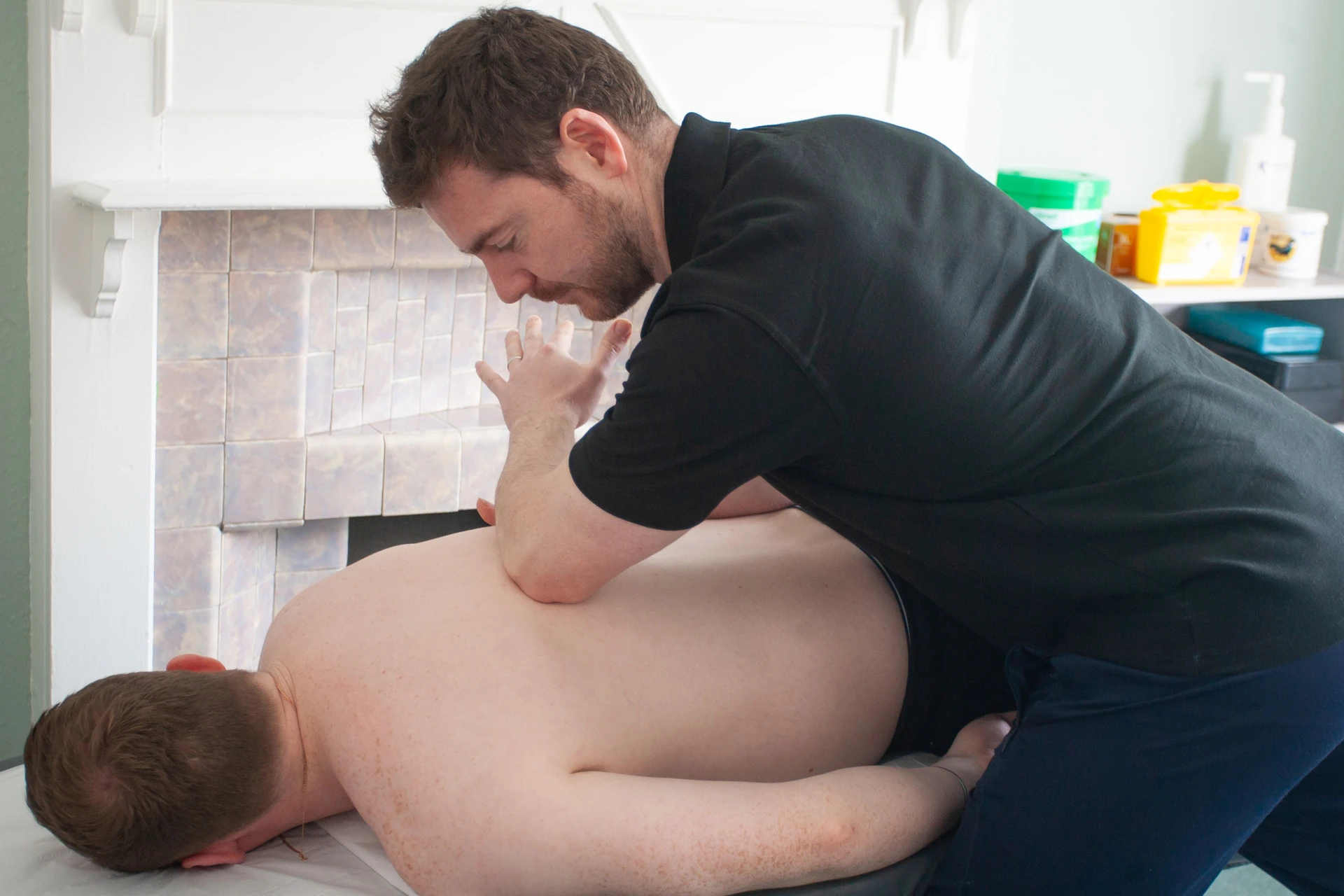
What is Sciatica?
Sciatica is a term used to describe pain that radiates along the path of the sciatic nerve. The sciatic nerve runs from the lower back through the buttocks and down the back of each leg; sciatica typically affects one side of the body and can vary in intensity, from mild discomfort to severe pain.
Location of pain: Usually starts in the lower back and/or buttock and radiates down the back of the thigh and leg. It can extend below the knee and into the foot and toes.
Nature: Often described as sharp, shooting, or burning pain. It can be accompanied by numbness, tingling (pins and needles sensation), or muscle weakness in the affected leg.

Causes:
- Herniated Disc – Disc material in the spine presses on the sciatic nerve.
- Spinal Stenosis – Narrowing of the spinal canal, which then compresses the nerve.
- Degenerative Discs – Breakdown of discs in the spine due to aging, which can irritate or compress the sciatic nerve
- Spondylolisthesis – When a vertebra slips forward over another vertebra, putting pressure on the nerve root.
- Piriformis Syndrome – Compression of the sciatic nerve caused by the piriformis muscle in the buttocks.
- Trauma – Injuries or accidents to the spine.

Diagnosis:
Diagnosis of sciatica is typically based on medical history and physical examination. Sometimes you may need to be referred for imaging tests such as an MRI or CT scan.
Once a cause of your sciatic pain is determined your osteopath will discuss a treatment plan with you – with the aim to help pain management, reducing inflammation and improving mobility and function. Osteopathic treatment uses gentle hands-on manual therapy techniques which may include soft tissue massage, stretching, and gentle joint manipulation. Some of our osteopaths may use soothing cranial techniques which are focused on the head and spine. If cranial osteopathy is a specific request of yours, please let us know before booking an appointment so we can make sure you are seeing a practitioner who uses cranial techniques.
It is likely we will advise you avoid certain activities which could stress the sciatic nerve and aggravate symptoms and your osteopath may provide you with an exercise programme tailored to your specific needs. This may include exercises to help strengthen your core muscles, improve flexibility and support your spine. Osteopaths can also provide guidance to help reduce strain on your back whilst working, as well as offer sleep positioning and daily activity advice.
Meet the team behind Carshalton Osteopathic Surgery
What our patients say
EXCELLENT
